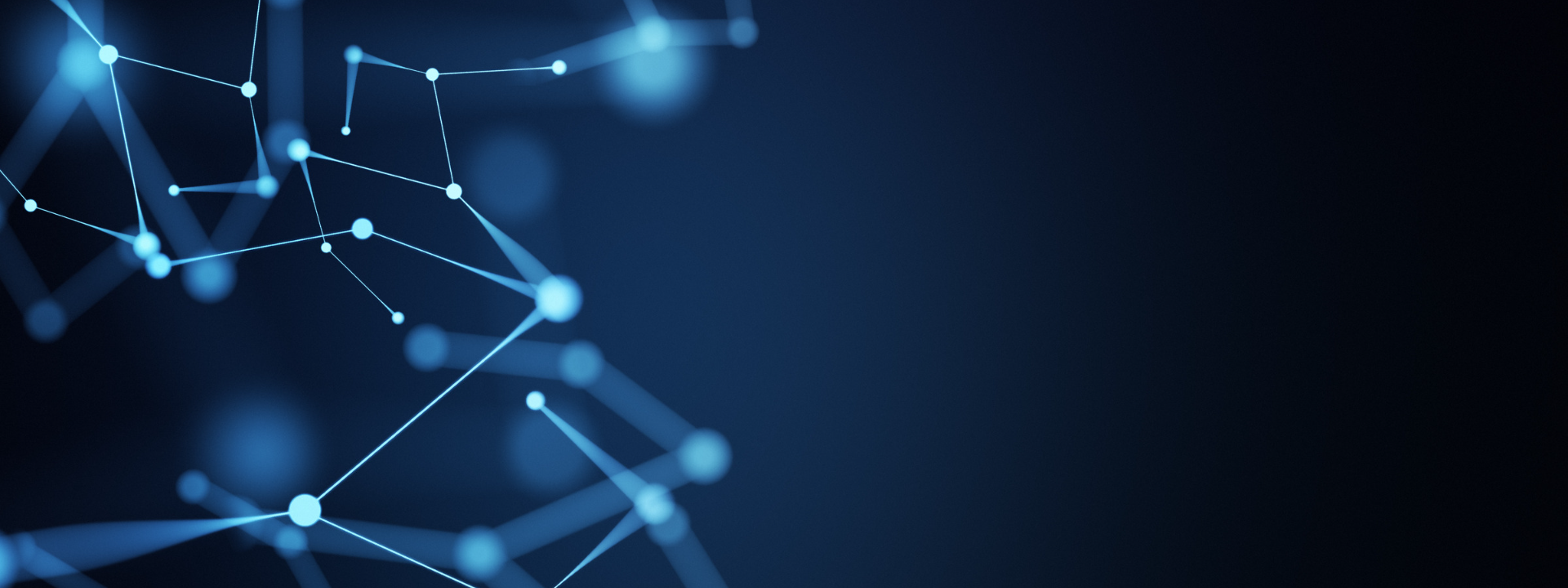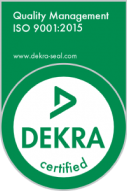What is TAC 202?
Texas Administrative Code Chapter 202 (TAC §202) is a set of rules and regulations that outline the minimum information security and cybersecurity responsibilities and roles at state agencies and institutions of higher education in Texas. This chapter is designed to protect the confidentiality, integrity, and availability of information systems and data within these organizations and ensure they are secure against potential cyber threats.
One of the critical provisions of TAC §202 is the requirement that agencies and institutions of higher education use the TAC §202 Security Controls Standards Catalog. This catalog is based on the National Institute of Standards and Technology (NIST) Special Publication (SP) 800-53, R4, a widely-recognized security standard for information systems. The security controls catalog is designed to provide a common language and minimum standards for implementing security measures, which helps to ensure that all agencies and institutions use consistent and effective security practices. By adhering to these standards, these organizations can reduce their risk of cyber-attacks and data breaches, which can seriously affect their operations and reputation. Additionally, using a centrally-managed controls catalog can help streamline the implementation of security measures, as it provides a clear set of guidelines that can be followed.
One of the primary responsibilities of agencies and institutions of higher education under TAC §202 is to implement appropriate security measures to protect their information systems and data. Institutions should conduct regular risk assessments to identify potential vulnerabilities and implement controls to mitigate those risks. It also includes implementing measures to protect against unauthorized access to systems and data, such as firewalls and intrusion detection systems.
TAC §202 also requires agencies and institutions of higher education to have robust incident response plans to effectively respond to and recover from cyber attacks or data breaches. An Incident Respons Plan is a document that outlines an organization’s procedures, steps, and responsibilities of its incident response program. In addition, these organizations need to have a strategy to communicate with stakeholders about the incident to minimize any potential impacts on their operations or reputation.
In addition to implementing security measures, TAC §202 also requires agencies and institutions of higher education to have a strong focus on cybersecurity awareness and training. Security awareness includes providing regular training to employees on how to identify and prevent cyber threats and report potential incidents. It is also essential for these organizations to have a culture of cybersecurity in which employees are encouraged to be vigilant about protecting information systems and data.
Overall, TAC §202 is an essential set of rules and regulations that help to ensure the security and integrity of information systems and data within state agencies and institutions of higher education in Texas. By following the standards outlined in the TAC §202 Security Controls Standards Catalog, these organizations can effectively protect themselves against cyber threats and maintain the trust and confidence of their stakeholders. TAC §202 plays a vital role in the cybersecurity landscape of Texas.
SOC 2 compliance refers to a set of privacy and security standards for service providers designated by the AICPA (American Institute of Certified Public Accountants). Although complying with SOC 2 is not mandatory, customers often demand it from organizations they interact with, especially cloud-based services, to ensure that their data is protected. Organizations looking to meet compliance standards must ensure specific service controls and procedures regarding their information systems’ confidentiality, security, availability, and processing integrity. The systems include the organization’s people, processes, technology, physical infrastructure, and servers.
What is a SOC 2 Report?
To get a SOC 2 report, an organization providing services must undergo a third-party audit. The SOC 2 auditor will be either an American Institute of Certified Public Accountants (AICPA) certified firm or a CPA (Certified Public Accountant). They will evaluate your security posture and determine if your controls, policies, and processes comply with the SOC 2 requirements.
The audit reports assess if the service providers undergoing the review have drafted and implemented effective procedures meeting the SOC 2 objectives. Enterprises that successfully pass the SOC 2 audit use the compliance designation to demonstrate that they are committed to the security and privacy of their customers and stakeholders.
SOC 2 is one of the three types of SOC reports. The other two are SOC 1 and SOC 3. A brief description of all three follows:
- SOC 1 Reports: AICPA mainly developed the SOC 1 framework targeting third-party service providers, which assures your clients that you are handling their financial information safely and securely. SOC1 reports giving your clients an objective evaluation regarding controls addressing compliance, operations, and internal controls over financial reporting.
- SOC 2 Reports: The SOC 2 framework helps businesses demonstrate their compliance with security controls. After organizations started measuring the effectiveness of their security controls through the SAS 70 audit standard, AICPA developed SOC 2 with an emphasis on security. It is rooted in the Trust Services Criteria or TCS (discussed later). Iassuresut the internal controls related to TSC and comprehensive information on auditor’s testing in an organization.
- SOC 3 Reports: The AICPA says that an organization prepares a SOC 3 report to meet the requirements of clients who want assurance regarding the controls related to processing integrity, security, availability, privacy, or confidentiality of a service provider but do not know how to use a SOC 2 report effectively. Thus, SOC 3 contains the same information as SOC 2 but is drafted for a general audience.
Understanding SOC 2 Reports:
- SOC 2 Type 1: This report focuses on the ‘design’ of an enterprise’s security controls at a specific moment. It describes the existing controls and procedures, reviewing the documents around these controls. Furthermore, it validates the adequacy of all administrative, logical, and technical controls.
- SOC 2 Type 2: It focuses on the ‘design’ and ‘operating effectiveness’ of controls and takes longer to assess the controls, typically between 3-12 months, and includes the auditor running penetration tests to monitor how the organization handles data security risks over a period. The independent review confirms that the enterprise strictly complies with the requirements outlined by AICPA. The SOC 2 Type 2 audit process includes:
- Reviewing the audit scope
- Creating a project plan
- Testing controls for design and operational effectiveness
- Authenticating the results
- Delivering the organization’s report.
Organizations new to compliance can easily confuse SOC 2 Type 1 and Type 2 reports. SOC 2 Type 1 differs from Type 2 in that it assesses the security setup and process design at a specific time. On the other hand, the Type 2 report (also written as “Type II”) estimates how adequate the controls are over a more extended period by observing operations for usually six to 12 months.
Why Would You Need to Comply with SOC 2?
Following are the six reasons why organizations must obtain a SOC 2 compliance report:
- Cost-effectiveness: Some businesses might think that audit costs are high. However, a SOC 2 audit helps avoid security breaches that are far costlier. For instance, in 2021, a data breach cost more than $4.2 million on average – a figure rising yearly.
- Competitive advantage: A SOC 2 report will give you an edge over competitors who cannot demonstrate compliance.
- Peace of mind: Passing the stringent SOC 2 audit assures improved security posture for your networks and information systems.
- Regulatory compliance: SOC 2’s requirements sync with other frameworks, like the International Organization for Standardization’s ISO 27001 and Health Insurance Portability and Accountability Act (HIPAA). Thus, the certification can boost your organization’s overall compliance efforts.
- Insights: A SOC 2 report gives valuable insights into your business’s risk and security posture, internal controls governance, vendor management, regulatory oversight, and more.
What is Required for SOC 2 Compliance?
You can attract more business with security covered. However, those operating in the finance or banking sector or an industry where confidentiality and privacy are paramount must achieve a higher compliance standard. AICPA defines SOC 2 based on the Trust Services Criteria, which have the following principles:
- Security: It focuses on operational/governance controls to protect your data and demonstrate that systems at a service organization are protected against unauthorized access and other risks that could impact the service organization’s ability to provide the services promised to clients. All SOC 2 requirements are optional except those that fall under Security. Selecting additional SOC 2 principles may vary based on the type of data you store or process,
- Availability: It focuses on the accessibility of the system and how you maintain and monitor your infrastructure, data, and software to ensure you have the system components and processing capacity to meet your business objectives.
SOC 2 compliance requirements in the ‘Availability’ category include:
- Measuring current usage: Establishing a capacity management baseline to evaluate the risk of availability caused by capacity constraints.
- Identifying environmental threats: Assessing ecological threats that can impact system availability, like adverse weather, power cuts, fire, or failure of environmental control systems.
- Processing integrity: It focuses on delivering the correct data at the right time and place. Furthermore, data processing must be accurate, valid, and authorized.
SOC 2 compliance requirements in the ‘Processing integrity’ category include:
- Creating and maintaining records for system inputs: Compiling accurate records of all the system input activities.
- Defining processing activities: This ensures that the products or services meet specifications.
- Confidentiality: It restricts disclosure of and access to private data so that only specific, authorized organizations or people can view it. Confidential data can include business plans, sensitive financial information, customer data, or intellectual property.
SOC 2 compliance requirements in the ‘Confidentiality’ category include:
- Identifying confidential information: Implementing procedures to identify personal and sensitive information when you create or receive it and determine how long you must retain it.
- Destroying confidential information: Implementing procedures to erase sensitive information identified and marked for destruction.
- Privacy: It focuses on the organization’s adherence to the client’s privacy safeguards and AICPA’s generally accepted privacy principles (GAPP). The SOC category considers methods for collecting, using, and retaining personal information and the process for the disposal and disclosure of data.
SOC 2 compliance requirements in the ‘Privacy’ category include:
- Using clear and conspicuous language: The organization’s privacy notice must be clear and coherent, leaving no chance for misinterpretation.
- Collecting information from reliable sources: The organization confirms third-party data sources are trustworthy and operates its data collection process legally and fairly.
Additional SOC 2 Compliance Checklist
SOC 2 compliance bases itself on the five Trust Services Categories: availability, processing integrity, confidentiality, privacy, and security. Security forms the SOC 2 compliance baseline and includes broad criteria familiar to all trust service categories.
The security principle focuses on the service’s asset and data protection against unauthorized access or use. Organizations can implement access controls to prevent unauthorized data removal, malicious attacks, misuse of the organization’s software, or unsanctioned disclosure of organizational information.
The essential SOC 2 compliance checklist (that will satisfy the auditor) should address these controls:
- Physical and logical access controls: How the organization restricts and manages physical and logical access to prevent unauthorized access.
- System operations: How the organization manages its system operations to detect and prevent deviations from set procedures.
- Change management: How the organization implements a controlled change management process and mitigates unauthorized changes.
- Risk management: How the organization identifies and develops risk mitigation activities while navigating business disruptions and using vendor services.
Does Law Require SOC 2 Certification?
Generally, you do not need SOC 2 compliance certification legally. However, most Software-as-a-system (SaaS) and business-to-business (B2B) vendors should consider getting certified if they haven’t already because SOC 2 is a crucial requirement in vendor contracts.
Can You Use Software to Speed Up SOC 2 Compliance?
As mentioned, SOC 2 primarily revolves around policies and processes and is concerned little about technical tasks. Hence, there is no dedicated, automated tool that will quickly make your business SOC 2 compliant.
Furthermore, the SOC 2 requirements are not prescriptive; hence you must define your processes and controls for SOC 2 compliance and then use automated tools to make their implementation easy. Thus, a system will monitor and alert you whenever a technical control failure occurs. For example, suppose one of the limits of your control offers access to your systems to specific administrators. You can deploy a tool that tracks and retrieves the status of permissions in real-time.
For every implemented control, think of the evidence you will present to the auditor. You must remember that defining a rule is merely a part of the SOC 2 compliance requirements; you must demonstrate that it works effectively.
SOC 2 Vs. SOC 1: How To Determine if the SOC 2 Audit is for You?
CPAs may choose to go for either a SOC 1 or SOC 2 compliance audit. You must comply with SOC 2 Type 2 if you store customer data. To determine if you require a SOC 2 audit, you must start by knowing how SOC 2 differs from SOC 1.
- SOC 1: SOC 1 compliance considers controls relevant to an organization’s internal control over financial reporting. The reports can be either Type 1 or Type 2. The Type 1 report signifies that the enterprise suitably defines and implements the rules in operation. The Type 2 report would offer these assurances, including an opinion if the controls were adequate throughout an extended period.
- SOC 2: SOC 2 compliance is voluntary for service organizations who wish to demonstrate their commitment to information security. Same as above, SOC 2 reports are also of two types.
Your organization must pursue SOC 1 if your services affect your clients’ financial reporting. For example, if your enterprise creates software processing your clients’ collections and billing data, you are impacting their financial reporting, and hence a SOC 1 is appropriate. Another reason enterprises prefer SOC 1 is that their clients demand a “right to audit.” Without SOC 1, it can be a time-intensive and costly process for both parties, especially if a few of your clients ask to submit a similar request. Additionally, you must comply with SOC 1 as a compliance requirement.
On the other hand, no compliance framework like HIPAA or PCI-DSS requires you to be SOC 2 compliant. In other words, if your business does not process financial data but only hosts or processes other data types, you require the SOC 2 report. With today’s business environment becoming extraordinarily aware and sensitive regarding data breaches, your clients will want proof that you are taking adequate precautions to protect their data and prevent any leaks.
Thus, the choice to pursue either SOC 1 or SOC 2 certification depends on your organization’s operational profile. A critical determining factor when choosing between SOC 1 and SOC 2 is your organization’s controls affecting your client’s control over financial reporting. You can engage an audit firm to determine whether SOC 1 or SOC 2 certification (or both) is the right fit for your enterprise.
A thorough understanding of the difference between SOC 2 Type 1 and SOC 2 Type 2 reports will help service providers handle their customers’ data with appropriate security. They must consider investing in the technical audit necessary for a SOC 2 report to protect their clients’ non-financial yet confidential and sensitive data. Many clients today expect SOC 2 compliance from their service providers, and if you are SOC 2 compliant, it demonstrates your dedication to cybersecurity.
About Columbia Advisory Group:
Columbia Advisory Group (CAG) is a leading Information Technology (IT) consulting firm. CAG’s team has assessed and helped improve the performance of more than 300 technology organizations and IT departments, including many higher education institutions, state agencies, and Fortune 50 customers. Practice specialty areas include Infrastructure, IT Service Management, Cybersecurity, and A/V Services. CAG improves business outcomes with IT insights and expert technical support. Based in Dallas, Texas, CAG works extensively with clients throughout the U.S. Contact us at info@columbiaadvisory.com.
References
- Brown, S. (2022, October 11). SOC 2 Type 1 guide: Everything you need to know. Retrieved January 1, 2023, from Strongdm.com website: https://www.strongdm.com/blog/what-is-soc-2-type-1
- Harrington, D. (2022, August 26). SOC 2 compliance definition & checklist. Retrieved January 1, 2023, from Varonis.com website: https://www.varonis.com/blog/soc-2-compliance
- Johnson, B. (2022, September 30). The Differences Between SOC 1 vs SOC 2. Retrieved January 1, 2023, from Strongdm.com website: https://www.strongdm.com/blog/soc-1-vs-soc-2
- Picotte, A. (2020, May 5). SOC 2 compliance requirements: Essential knowledge for security audits. Retrieved January 1, 2023, from Uptycs.com website: https://www.uptycs.com/blog/soc-2-compliance-requirements
- SOC 2 compliance requirements. (n.d.). Retrieved January 1, 2023, from Secureframe website: https://secureframe.com/hub/soc-2/requirements
- SOC 2 Type II: Compliance and certification. (n.d.). Retrieved January 1, 2023, from Getkisi.com website: https://www.getkisi.com/guides/soc-2-type-ii
Reciprocity. (2022, November 9). 6 Reasons Why You Need SOC 2 Compliance. Retrieved January 1, 2023, from Reciprocity.com website: https://reciprocity.com/blog/6-reasons-why-you-need-soc-2-compliance/




